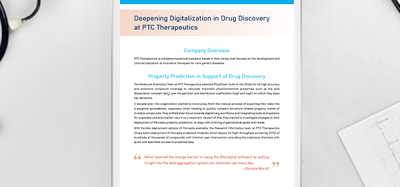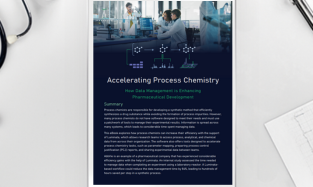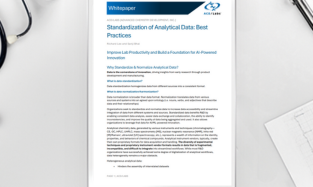A roadmap for development
Posted: 28 November 2006 | | No comments yet
Laboratory automation in pharmaceutical research is an established technology, but what does the future hold for its role in R&D? European Pharmaceutical Review asked four industry experts for their views, and you can read what they had to say in this virtual round table discussion.
Laboratory automation in pharmaceutical research is an established technology, but what does the future hold for its role in R&D? European Pharmaceutical Review asked four industry experts for their views, and you can read what they had to say in this virtual round table discussion.
Lab Automation Roundtable
Panelists:
- Dr Ulrich Schopfer, Global Head of Compound Management, Novartis Institutes for BioMedical Research
- Dr Gordon Alton, Department of Biochemistry, Pfizer Global Research & Development
- Kjell Fransson, Project Leader Automation, Astrazeneca R&D
- Thomas Keller, Head of UK Applied Technology, GlaxoSmithKline R&D
Laboratory automation in pharmaceutical research is an established technology, but what does the future hold for its role in R&D? European Pharmaceutical Review asked four industry experts for their views, and you can read what they had to say in this virtual round table discussion.
Q1. What – in your view – are the most exciting technologies on the horizon for lab automation?
Alton: The most exciting technologies are in automating cell culture for high and medium throughput cell-based screening. Most cell-based HTS screens use conventional cell culture tools and techniques. While these screens can be made sufficiently robust for providing confidence on a hit from a library they lack the performance to provide quality dose response data in secondary (medium throughput) assays. Additionally, in true HTS applications there is significant variability introduced due to the manual manipulation of the cells. Full automation of cell growth, harvest, seeding, splitting and passaging heralds a new era in quality cell-based HTS and providing significant time savings to scientists engaged in medium throughput screening. The Corning RoboFlask technology exemplifies the new tools emerging on the market.
Schopfer: I am excited about the possibilities of acoustic technology mixing and dissolution at high energy and solution transfer at lower energy. Both technologies still have a long way to go in order to improve throughput and ease of integration – and if both could be combined in a single module that would truly be a breakthrough!
Fransson: For early phase pharmaceutical development it is salt and polymorph screening (that are the most exciting technologies on the horizon), as described in several articles in European pharmaceutical Review, e.g. integration of instruments such as Raman and XRPD with robotics.
Keller: The question is best answered by looking at it from two perspectives; the research and development part of the organisation.
- Research: The industry is very mature in lab automation and a lot of efforts and investment has gone into the automation of the processes within it. Any further changes within this sector need to be step-changes/paradigm shifts to really interest a senior manager. The potential of MEMS technology has not yet been fully utilised and this could become the most exciting technology in lab automation as it addresses several issues: cost of consumables and space.
- Development: Lab automation in this area has, to date, been conservative. However, as the FDA and pharmaceutical industry agree on a new partnership model the possibilities for more value adding lab automation seems to open up. I would make the observation that, at this stage, semi-automation is dominant compared to full automation as seen in Research.
Q2. In the past, a lack of industry standards has presented a challenge for automation. How has this situation changed in the last five years?
Schopfer: The situation is still unsatisfactory. Automation projects take a long time to implement and changes to the instrumentation are often difficult. Further standardisation is critical to build better modular and compatible systems.
Fransson: For GMP regulated activities the situation has improved considerably thanks the wide acceptance of GAMP and the increased awareness among QA personnel and inspectors of the computerised system life cycle model.
Keller: I would say it is still lacking industry standards. Validation is an issue. For example the validation of a system as well as accuracy and reproducibility of a process is not achieved.
Q3. How have vendors met the challenges of limited laboratory space for accommodating equipment?
Alton: All biopharmaceutical companies are under intense pressure from investors to trim costs. As such, lab space is at a premium and equipment must fit into the workspaces available. Furthermore, most companies have made the shift to workstation approaches, which can be reconfigured (or moved to a new location) very easily. Most automation vendors have responded with tremendous innovation to meet the new requirements. New instruments on the market now have foot prints of less than half as compared to a functionally equivalent system from five years ago. We are seeing instruments that can do dose-response dilutions on 384-well formatted plates that take up less space than the computer that they are controlled from. The most significant advancements have been the miniaturisation of the syringes, optical encoders, motors, etc. leading to dramatic decreases in the size of the equipment.
Schopfer: Most vendors now offer smaller versions of their products. Supporting infrastructure such as pumps, tubing etc. is moved into the instrument, saving additional space.
Fransson: Not really for complex automated system. That is merely a consequence of escalated SHE regulations, requiring shielding of robotics, localised ventilation and other safety measures.
Keller: Not achieved.
Q4. Has the importance of data information systems been fully recognised by all drug discovery units, or are there improvements to be made?
Alton: Data information systems are recognised to be important but the reality at ‘ground level’, where the lab scientist operates at, is that most systems lack ease of use. So large improvements can be made in this area.
Schopfer: The critical importance of IT and data management is still not sufficiently appreciated in drug discovery. It is a recurring theme in many, if not most, automation projects that delays and cost-overturns are often due to an underestimation (and under specification) of the IT effort. Both customers and providers have to learn here.
Fransson: I can only speak for development units, where these systems have been employed for a long time, e.g. LIMS and CDS, now lately integrated with electronic lab notebooks. The use is also increasing for instruments producing complex data sets such as Raman, XRPD and NIR, where the latter has become an important tool for PAT. But there is always room for improvement.
Keller: Yes, and we are making enormous efforts in IS in all areas of R&D.
Q5. How do you anticipate lab automation evolving in the next five years?
Alton: I foresee that automation technology will extend further into the drug discovery process. Initially, it was confined to HTS labs. Currently, lab automation now extends to secondary post HTS biochemical and cell-based assays and some ADME/Tox screens. The next five years should see automation coming to every lab in the pre-clinical drug discovery organisation. All companies have to move idea-to-bench-to-clinic faster than ever before so automation technology is a relatively inexpensive way of doing that.
Schopfer: Lab automation for drug discovery will remain an area with a short innovation cycle. With true technology break-throughs being rare, modular systems that allow incremental upgrades and that are compatible with components from different providers will have a competitive advantage.
Industrial-style reliability and intuitive user interfaces will also characterise successful platforms of the future.
Fransson: For labour intensive work such as stability testing, the increased use of CROs and off-shoring to emerging markets countries will change the incitement for integrated manufacturers to invest in automation. For CROs it may be difficult to justify employing staff maintaining equipment, and in the off-shoring countries equipment has to compete with low wages.
Keller:
- Research area: paradigm shifts through the utilisation of emerging and novel technologies like MEMS.
- Development area: semi-automation and development partnerships between the pharmaceutical companies with the FDA.









